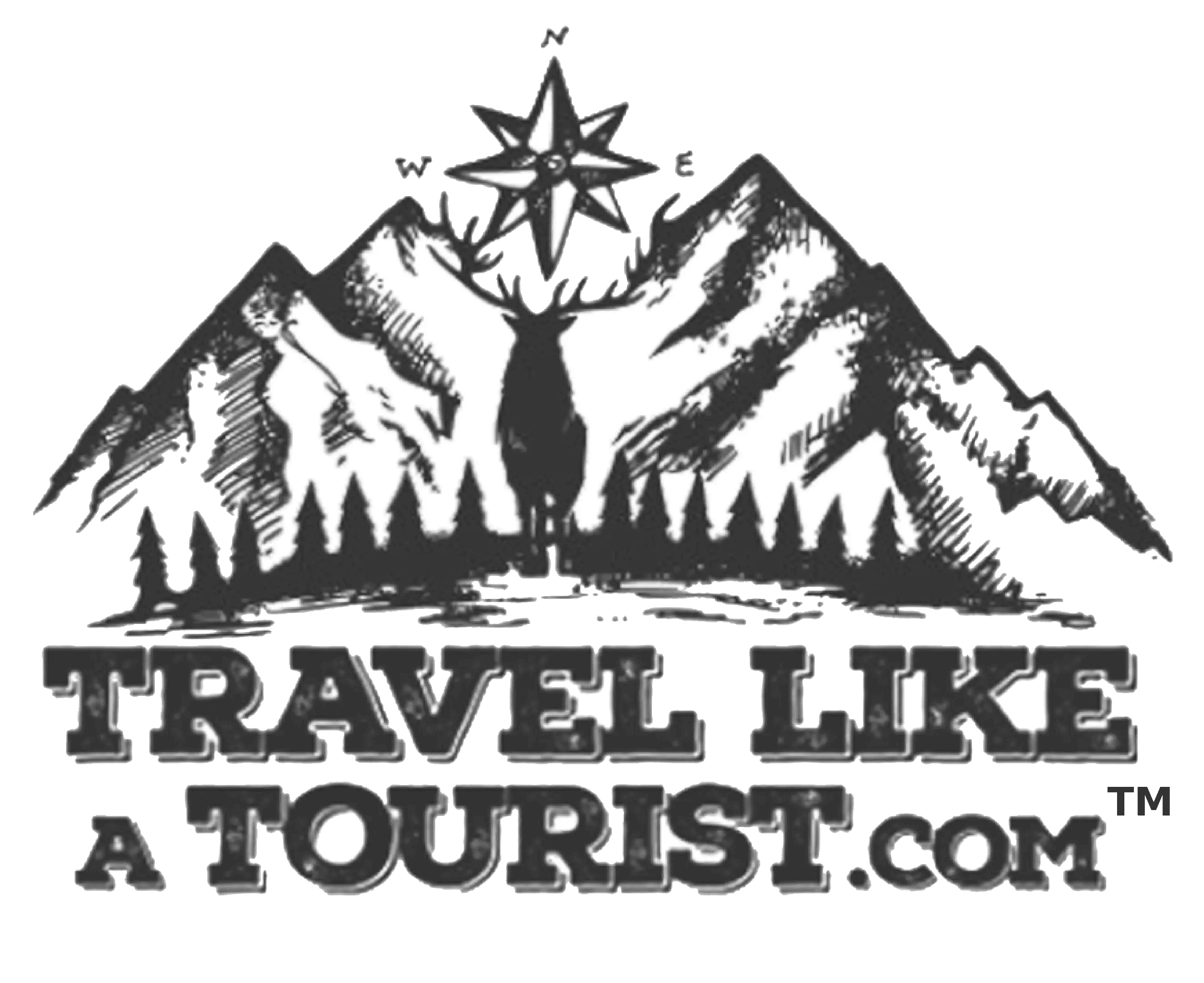Monument Valley Is Popular Site To Film Wild West
It’s no wonder Hollywood has a fascination with filming in Monument Valley Tribal Park. The reddish-orange sandstone cliffs, monoliths, mesas, and buttes epitomize the Wild West, and it hasn’t changed much since the early Western movies were filmed here.
As you drive through the tribal park, it might jog your memory to some illustrious modern movie scenes.
One of the most iconic Hollywood scenes is when Forrest Gump stops his cross-country run, followers in tow, along U.S. Route 163 with Monument Valley in the background.

Forrest Gump Point, as it is known now, is a popular spot to get a photograph. After your picture, continue your drive to the gateway to Monument Valley Tribal Park and enjoy exploring these Navajo lands.
Monument Valley Tribal Park has 1,000-foot Monoliths
This tribal park, established in 1958, has 91,696 acres across Utah and Arizona. Sandstone monuments and pinnacles, towering 400 to 1,000 feet, along with shrubs and trees dot the valley floor throughout this desert landscape. Monument Valley | Navajo Nation Parks & Recreation
The main attraction is driving through the 17-mile loop in Lower Monument Valley. I suggest driving in a four-wheel-drive or all-wheel drive vehicle, like a Jeep. The park doesn’t allow motorcycles or RVs due to the rough terrain and deep sand dunes, according to the tribal website.

To hike or explore any of the back country, you will need a guide, as this is private land. You will see residents living in Monument Valley Tribal Park, and you are not to venture onto their property.
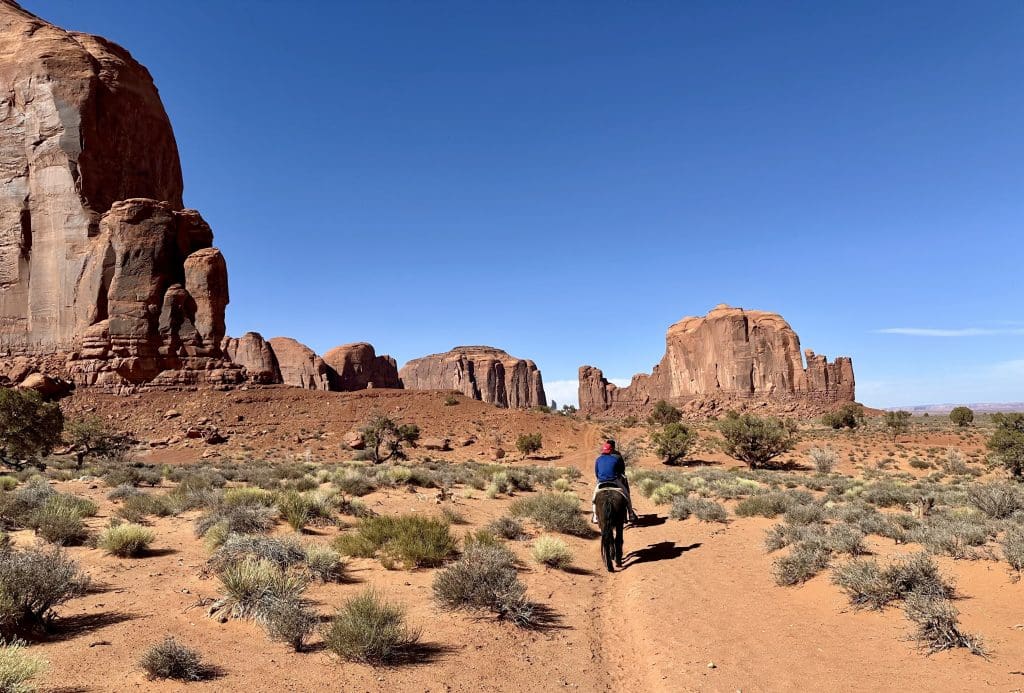
I can’t think of a better way to explore the off-road areas than on a horse where a guide will take you close to these stunning rock formations.
Drive the 17-mile Loop
But first, take your time driving the loop through the lower valley to gaze upon the mighty monuments.
It can be crowded in the summer, with a line to get into the park. I did not have that issue in March.
To see the unique points of view, start with the West Mitten Butte, East Mitten Butte, and Merrick Butte.
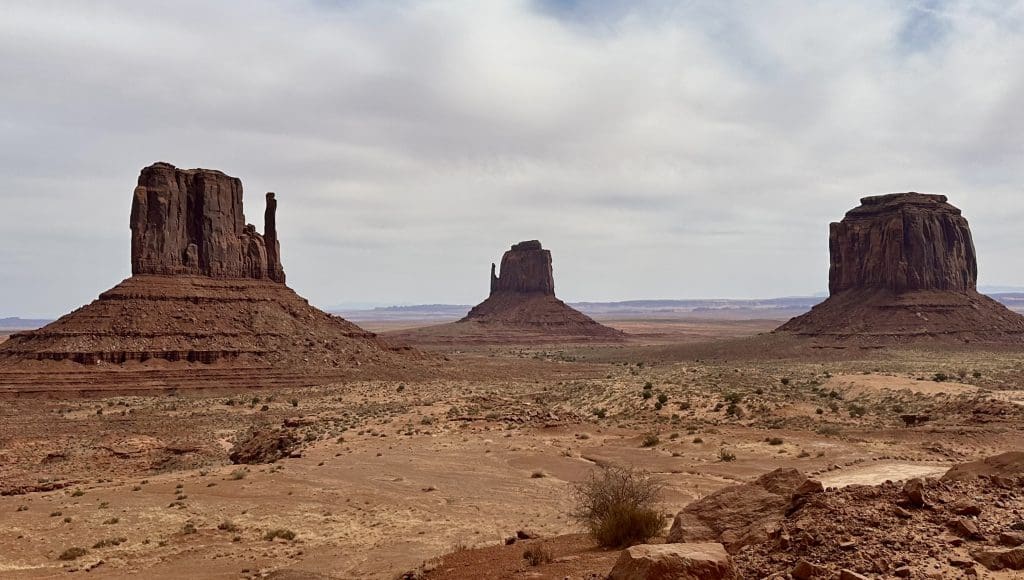
Two times a year, the West Mitten Butte casts a shadow on the East Mitten Butte as the sun sets. To get a tour for this by-yearly event, read Monument Valley Mitten’s Shadow Tours – Goulding´s Monument Valley.
See Elephant Butte
Next, on the loop, is Elephant Butte.

You can see the elephant’s trunk curling up on the left side in the picture below.
Admire the Three Sisters and Mitchell Mesa
Guided hikes are another terrific way to see the park. One such tour will get you on top of Mitchell Mesa. The hike is 2.5-miles, round-trip, is considered medium difficulty due to one mile being uphill, according to the website. For more information, check out Monument Valley Tribal Park – Hiking.
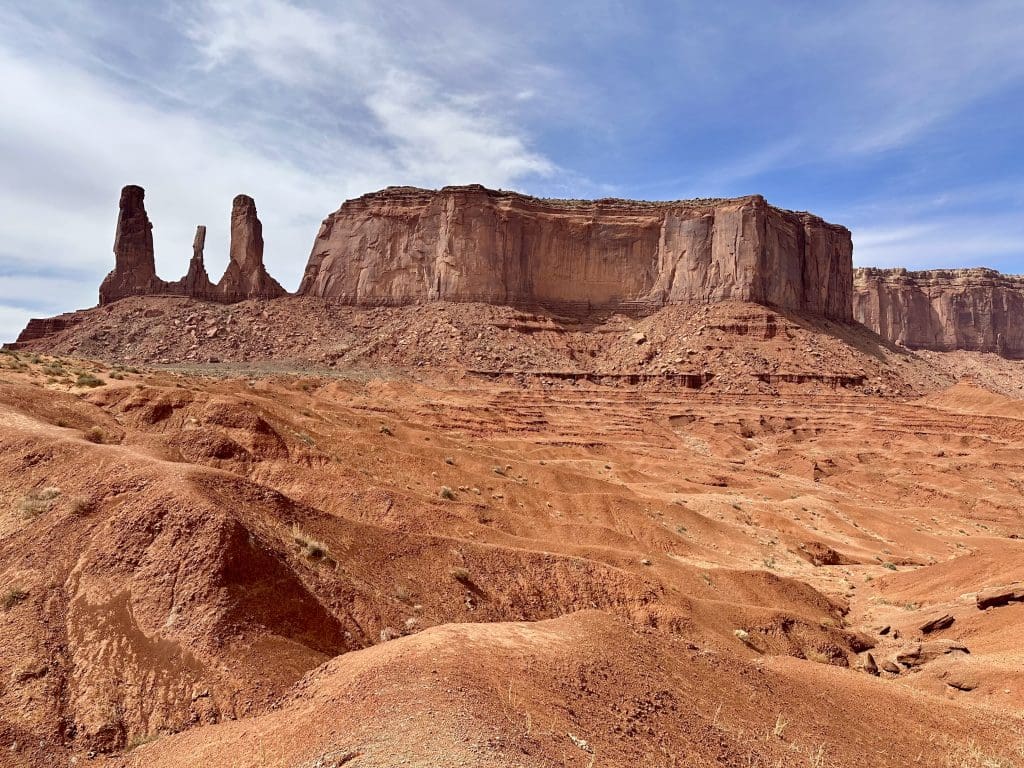
Horse rides, San Juan River tours, jeep tours, and other guided tours can be found on Monument Valley Tour Operators | Navajo Nation Parks & Recreation
Sit on a Horse at John Ford’s Point
John Ford’s Point is named after the legendary man who directed Old Westerns like, “The Man From Laramie,” and “Stagecoach.”
While directing his 1956 film, “The Searchers,” Ford would sit in his director’s chair, about where the horse is in the picture below. Iverson Movie Ranch: Monument Valley: How John Ford created the American West in “Stagecoach,” “My Darling Clementine” and other classics

The Iverson Movie Ranch website above lists movies filmed in the tribal park, showing where scenes were shot. The list of movies, with photographic evidence, includes “Back to the Future III,” “Transformers: Age of Extinction,” “National Lampoon’s Vacation,” and many more. The website also displays a photograph of John Ford in his chair sitting at what is now John Ford’s Point.
This viewpoint is one of the highlights of the drive. You can pay to sit on a horse at this famous spot, for a fee. The horse, in this picture, is named, Spirit, like the movie.
In addition, there is a small souvenir shop and refreshments for sale. Authentic Native American fry bread, which is deep-fried flatbread, is made and sold as well.
Pass By Camel Butte
As you pass Camel Butte, you will see it looks like a side profile of a camel laying on the ground with its humps sticking up.
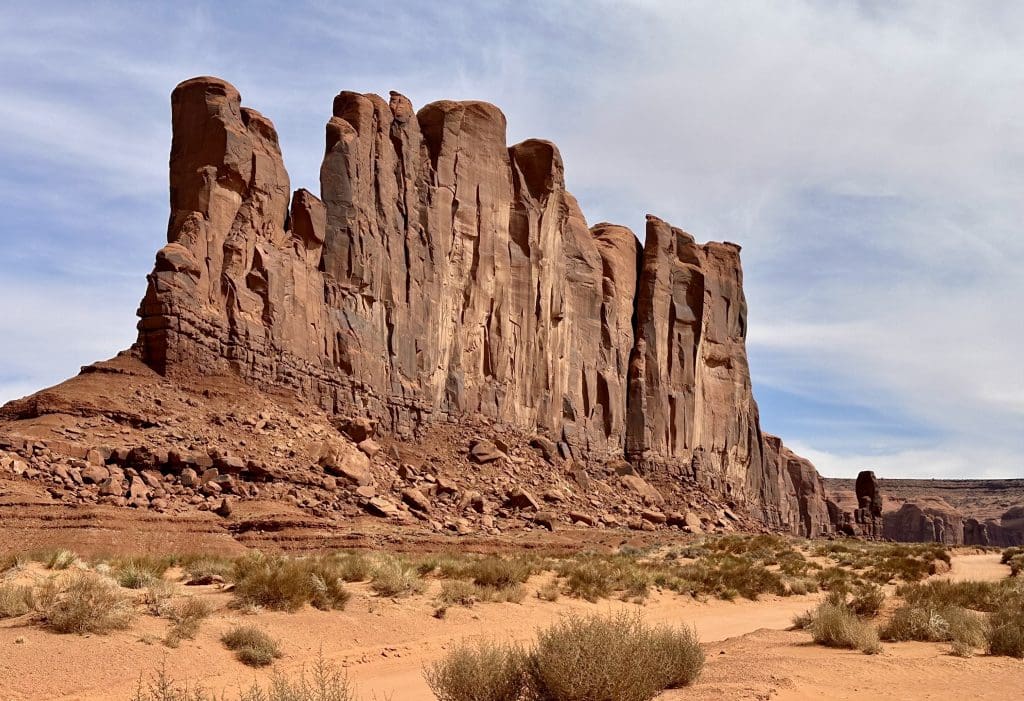
Along the scenic drive, you can buy jewelry, rugs, knives, arrowheads, and other Native American souvenirs. I would imagine that some of those living on the Monument Valley Tribal Park lands make their living selling these wares. But don’t think the loop drive looks touristy as most of what you can see from the road is rock formations and dirt.
View Totem Pole and Yei Bi Chei
The tall, slender rock spire, called the Totem Pole, is seen below, to the right of the group of shorter, thicker spires, called Yei Bi Chei.
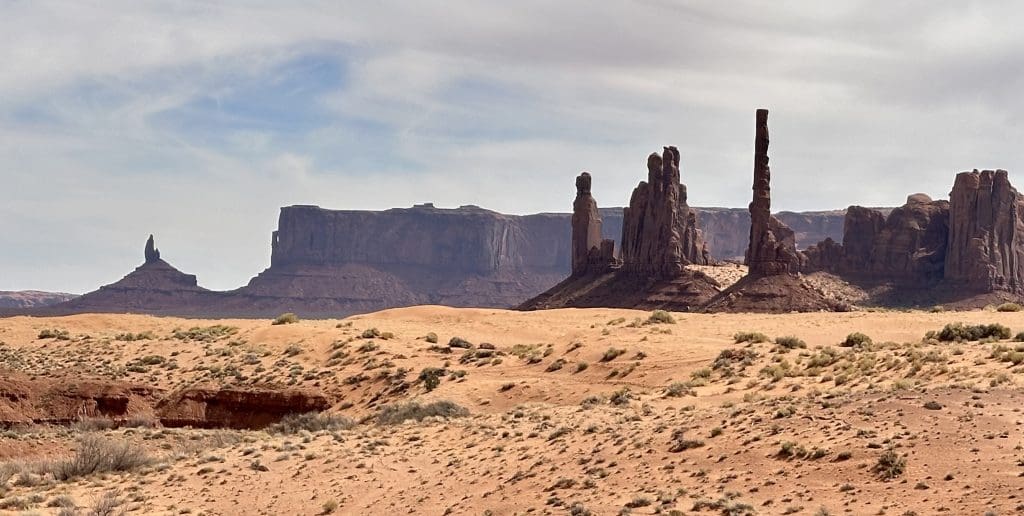
It is amazing how different these rock formations appear depending on the angle of the sun.
The Navajo name for Monument Valley is Tsé Bii’ Ndzisgaii, which in Navajo means, “Valley of the Rocks.” Yei Bi Chei – Monument Valley, Navajo Nation — Lens EyeView Photography
Grab a Photo at Artist’s Point
Artist’s Point, also known as Navajo Code Talker Point, is another stunning viewpoint. You can see why it’s called Artist’s Point –it makes you want to paint that photograph below.
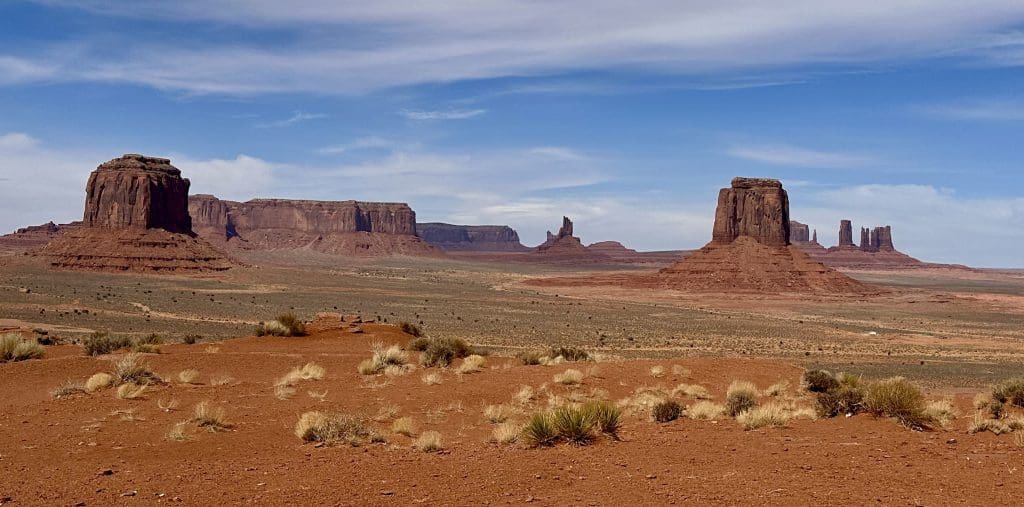
Navajo Code Talkers were paramount to the Allied success in World War II. The Japanese military were unable to break the code used by the U.S. military since it was based on the unwritten Navajo language. Navajo Code Talkers: The Unsung Heroes of World War II
Look Through the North Window
Looking through the North Window on the back of a horse is amazing since you can enjoy this spectacular scenery at a slower and more enjoyable pace.
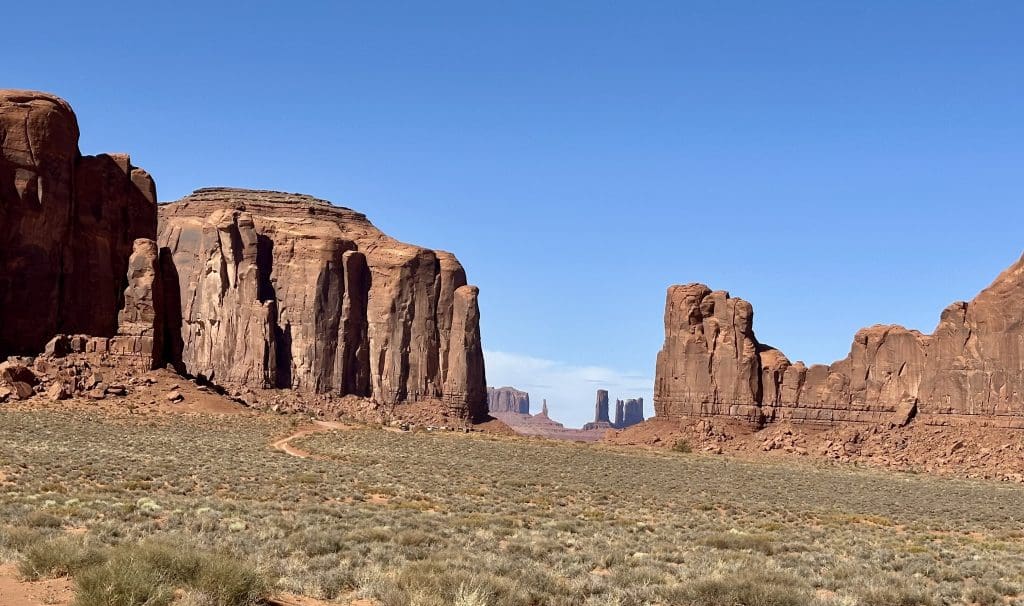
But don’t worry, you don’t have to ride a horse to see the North Window. While driving on the loop, you can peek through the window, framed by two mesas, to view some of the famous landmarks in the background.
Find The Thumb
The Thumb is a unique rock formation that sticks out from the other rocks like the thumb on a hand.
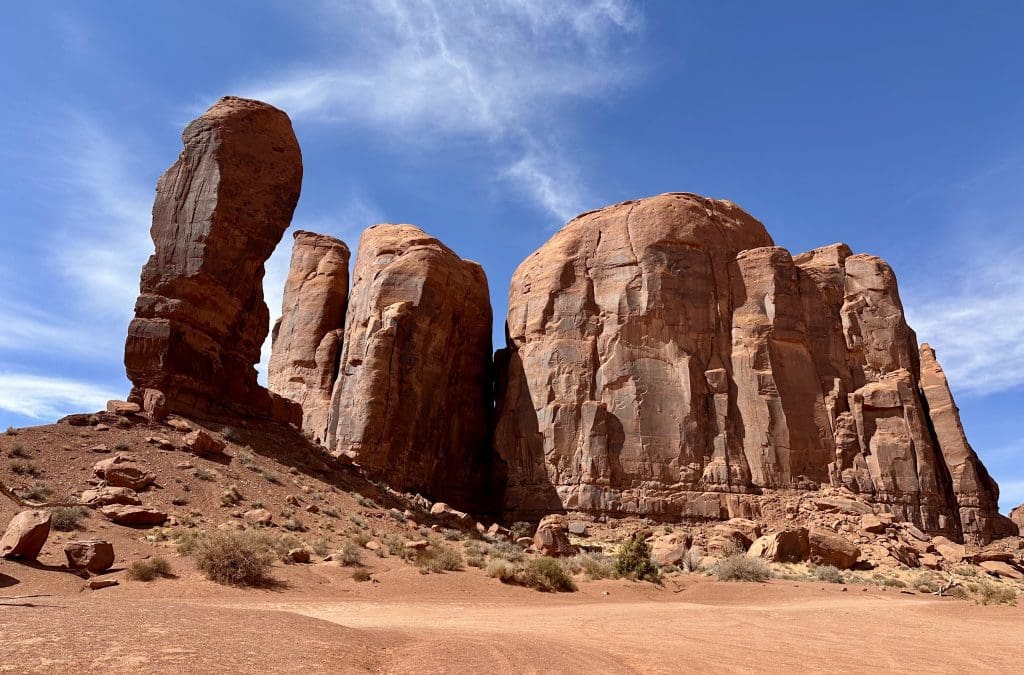
The Thumb, on the left above, is at the back end or side of Camel Butte depending on your position. It is close to where the loop drive intersects another direction of the road.
Horse Riding Tours Go Deeper Into the Park
Again, if you want a more personalized experience, take a horse ride through the park. You will go deeper into the park and see areas not accessible by your private car.
The horseback tours are at varied lengths, and I would call ahead to book this, so you don’t miss out. Our ride was with Dineh Trail Rides.

Our hour-long horse ride went by what was rumored as John Wayne’s favorite tree when he was filming, “She Wore a Yellow Ribbon.” The tree in the above picture is from a scene in the movie, according to our guide.
Learn About Navajo Life
In the Navajo culture, there are 50 distinct kinds of ceremonies performed at varied times and for specific reasons, according to the Goulding’s Lodge website. Some of these ceremonies last for hours, some for up to nine days. Navajo Culture – Goulding´s Monument Valley
Make sure to stop at the visitor’s center when you first arrive at Monument Valley Tribal Park to learn more about the Navajo culture.
There is spiritual significance to the rock formations. For instance, the Navajo believe Rain God Mesa brings life to the land. Monument Valley Sacred Tour – Sacred Monument Tours
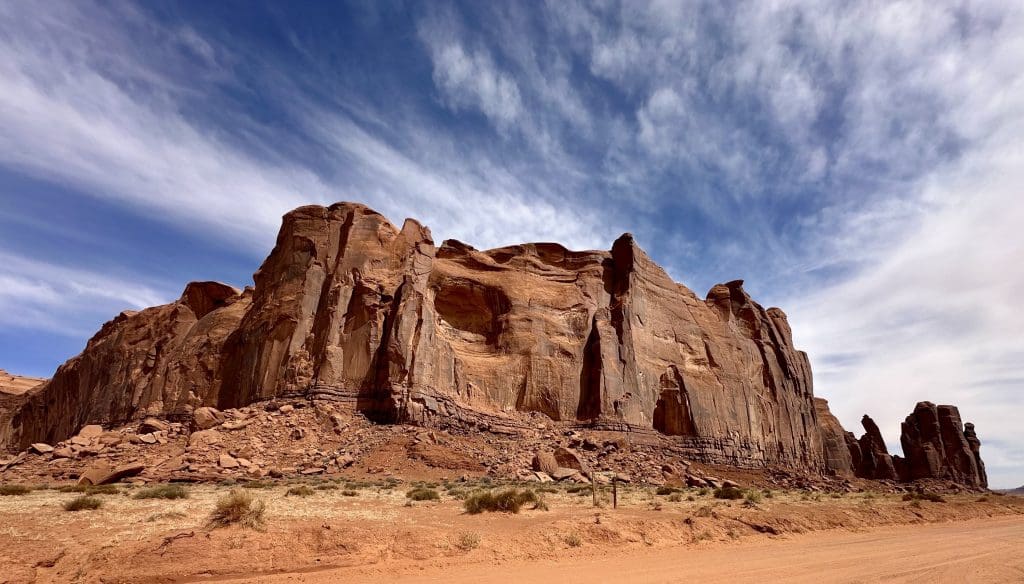
Thunderbird Mesa is another massive rock formation. The name comes from the mythical giant Thunderbird. Believed to be guardian of the land, Native American lore says Thunderbird controls the weather and bring storms. Monument Valley Sacred Tour – Sacred Monument Tours
Lodging and Camping in Monument Valley Tribal Park
There are two hotels listed on the tribal park website, Goulding’s Lodge and The View Hotel.
Goulding’s Lodge has hotel rooms and a campground with cabins. On the property, there is the Goulding’s Trading Post Museum. To make a reservation, visit https://gouldings.com.
The View Hotel has hotel rooms, cabins, and a campground. To book a room, visit https://mountainvalleyview.com.
Entrance Into Monument Valley Park
Winter hours are 8 a.m. to 5 p.m. every day, with the last entry into the park at 2:30 p.m. Summer hours are from 7 a.m. to 7 p.m. every day, with the last entry into the park at 4:30 p.m.
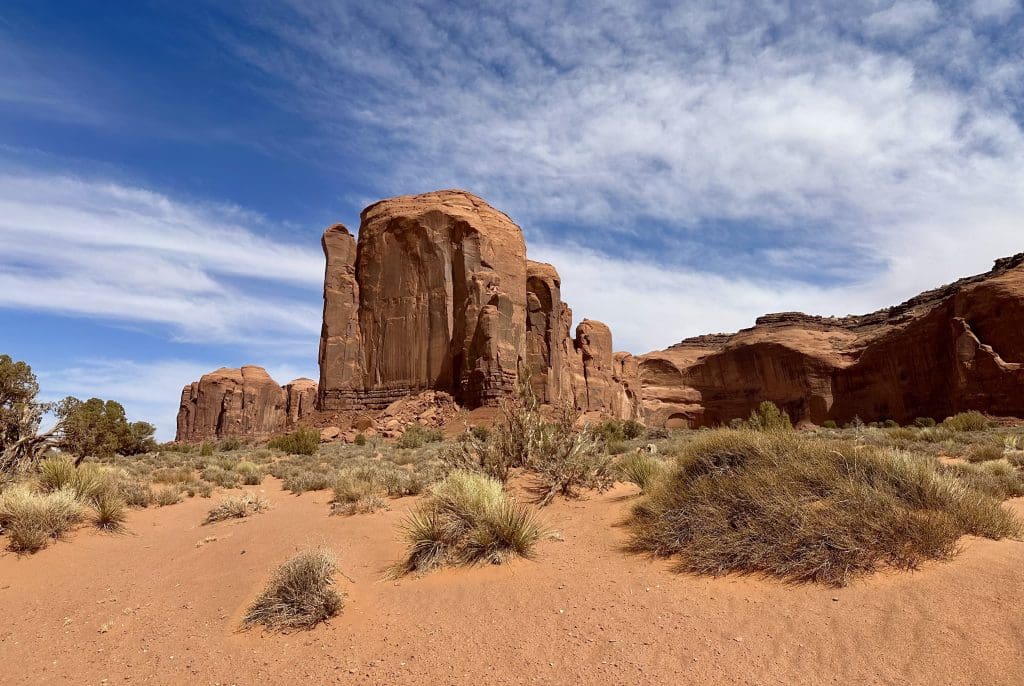
Peak season is between May and September, and the tribal park closes for Thanksgiving, Christmas, and New Year’s Day. We were there mid-March, which was a wonderful time as the weather was great and not crowded.
The entrance fee is $8 for each person, per day, per location. Monument Valley | Navajo Nation Parks & Recreation
Watch Sunset at Forrest Gump Point
I highly recommend seeing the sunset at Forrest Gump Point. There’s a green road sign marking the point, but the number of cars and people in the middle of the street taking pictures will let you know you’ve arrived at the correct spot.
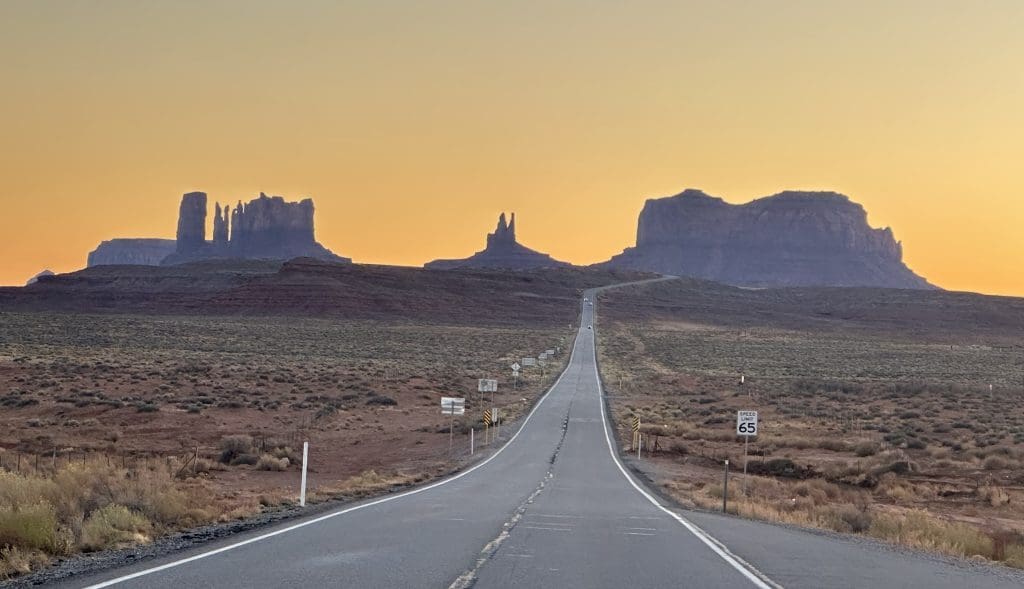
Our hotel, Bluff Dwellings, about 45 minutes away, told us it was the best place to see the sunset.
I didn’t have a chance to visit The View or Goulding’s, but since both hotels are on the valley floor I imagine the views of sunrise and sunset would be amazing.
Drive to Goosenecks State Reserve
Monument Valley is located close to national and state parks, including the Grand Canyon, Canyonlands, and Capitol Reef. For the sake of story length, I’m only calling out the nearby Goosenecks State Reserve.
The San Juan River winds through state reserve, near Mexican Hat. According to a park sign, geologists consider this part of the river to be one of the best examples of “entrenched meanders” in the world. You can see part of the river from this viewing spot about 1,000 feet below.
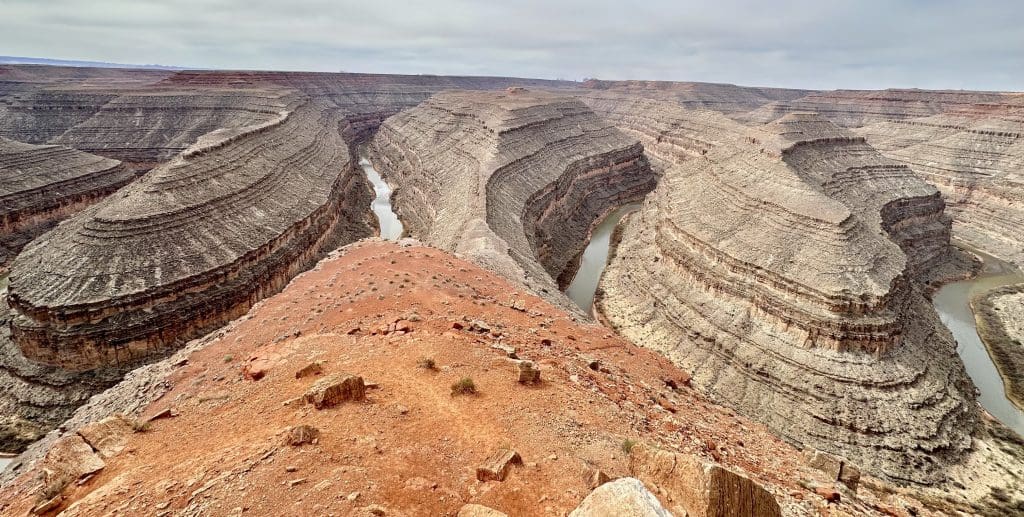
The river begins in Colorado and dumps into Lake Powell. Millions of years ago, the river started cutting through the rock as the Colorado Plateau slowly lifted upward presenting the canyon you see now, according to the park sign. The river is still cutting through the rock today.
To learn about another park close to Monument Valley, check out this story on Capitol Reef. Capitol Reef: See Rock Formations and Highlights In A Day – Travel Like A Tourist
